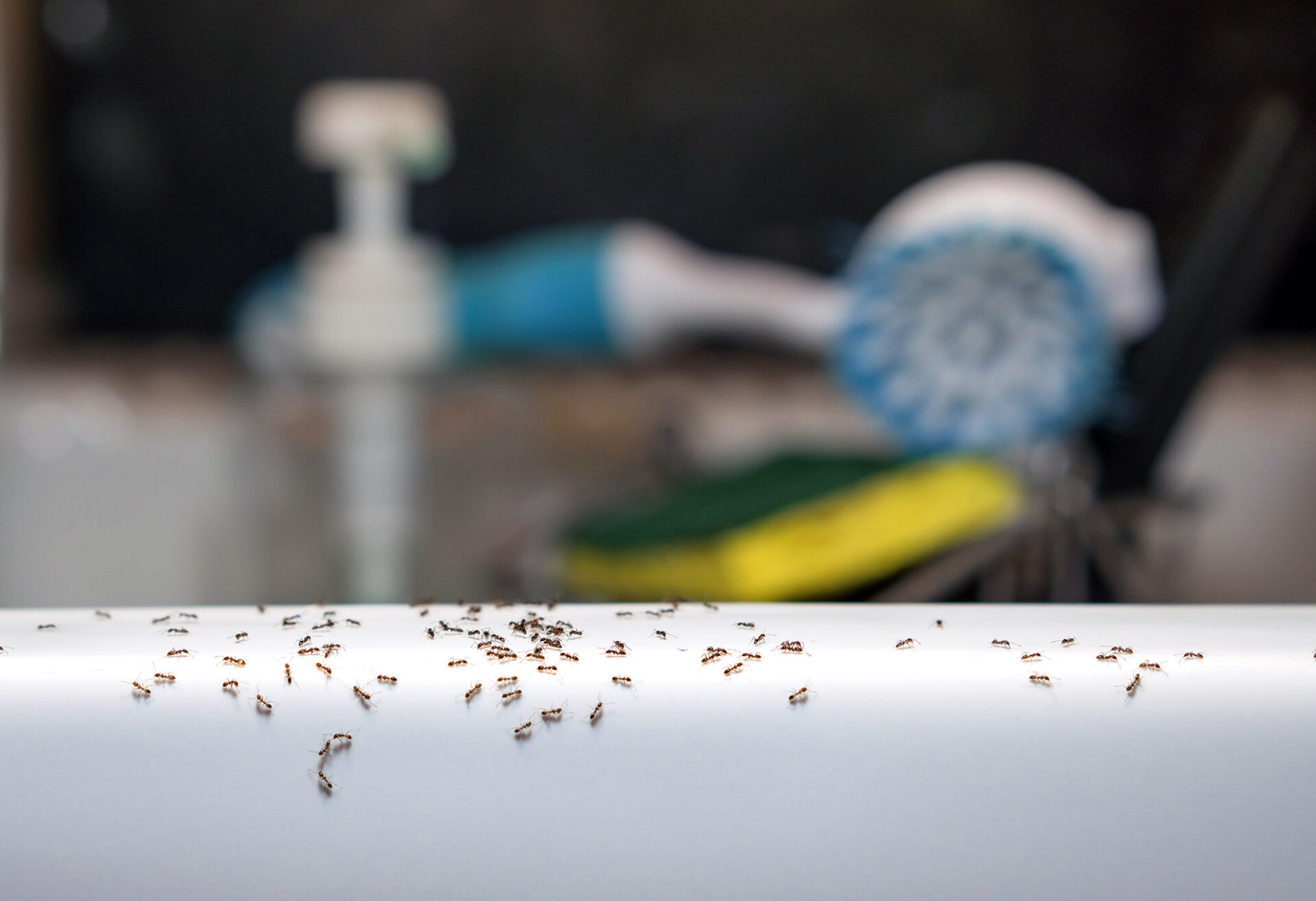Identifying the Ant Species: Small Black Ants In Kitchen And Bathroom

You’ve got tiny black ants marching across your kitchen counter and creeping into your bathroom, and you want to know who these uninvited guests are. Identifying the specific ant species can help you understand their behavior and find the best way to get rid of them.
Common Ant Species in Kitchens and Bathrooms
There are several types of small black ants that are commonly found in kitchens and bathrooms, but some of the most frequent culprits include:
- Pavement Ants (Tetramorium caespitum): These ants are about 1/16 to 1/8 inch long and have a distinctive two-segmented club at the end of their antennae. They are usually dark brown to black and are known for their preference for sweet foods. They are often found in cracks and crevices in sidewalks and driveways, but they can also invade homes in search of food.
- Odorous House Ants (Tapinoma sessile): These ants are slightly larger than pavement ants, reaching about 1/8 to 1/4 inch in length. They have a characteristic odor, similar to rancid butter, when crushed. Odorous house ants are omnivorous and are attracted to a variety of food sources, including sweets, meats, and grease.
- Pharaoh Ants (Monomorium pharaonis): These ants are small, measuring only about 1/16 inch long. They are light yellow to reddish-brown in color and have a distinctive heart-shaped head. Pharaoh ants are known for their ability to create large colonies and are commonly found in hospitals and other institutions. They are also attracted to sweet foods, grease, and protein sources.
Ant Behavior Patterns, Small black ants in kitchen and bathroom
- Nesting Habits: Ants create nests in a variety of locations, including under rocks, in soil, and within walls. They are often found in warm, moist areas, which is why kitchens and bathrooms are particularly attractive to them. Some ant species, like pavement ants, build nests in cracks and crevices in concrete.
- Foraging Activities: Ants are constantly searching for food, and they use a network of trails to guide them to and from their nests. They are attracted to sweet foods, meats, and grease, as well as crumbs and spills. They can also be attracted to moisture sources, such as leaky pipes or damp areas.
- Response to Disturbances: When disturbed, ants may react in a variety of ways. Some species, like pavement ants, may flee, while others, like odorous house ants, may release a pheromone that alerts other ants to the danger. This pheromone can also leave a scent trail that other ants can follow, making it easier for them to find food sources.
Understanding Ant Infestations

Ant infestations are a common nuisance in homes, particularly in kitchens and bathrooms. These tiny creatures are incredibly adaptable and can find their way into even the most meticulously maintained homes. Understanding how ants enter, what attracts them, and the potential risks associated with their presence is crucial for effective control.
Entry Points
Ants are masters of infiltration. They can squeeze through the tiniest cracks and crevices, making your home a vulnerable target. Common entry points for small black ants in kitchens and bathrooms include:
- Gaps around windows and doors: Even the smallest gaps can provide access for these tiny invaders.
- Cracks in walls and floors: Wear and tear, especially in older homes, can create pathways for ants.
- Openings around pipes and plumbing fixtures: Ants can easily exploit gaps around plumbing fixtures, seeking moisture and food sources.
- Unsealed holes in walls and ceilings: Holes left from electrical wiring or plumbing installations can become ant highways.
Factors Attracting Ants
Ants are drawn to kitchens and bathrooms because these areas provide a smorgasbord of resources they need to thrive.
- Food sources: Crumbs, spills, and leftover food scraps are irresistible to ants, providing them with a readily available food source.
- Moisture: Bathrooms are particularly susceptible to ant infestations due to the presence of water and humidity. Leaky pipes, condensation, and spills can create a haven for these moisture-loving creatures.
- Warmth: Ants are attracted to warmth, making kitchens and bathrooms with their appliances and warm water sources ideal habitats.
Risks Associated with Ant Infestations
While ants may seem harmless, their presence can pose a range of risks to your home and health:
- Food contamination: Ants can contaminate food with bacteria and other pathogens, potentially leading to food poisoning. This is especially concerning in kitchens where food is prepared and stored.
- Allergic reactions: Some people are allergic to ant stings, which can cause a range of reactions, from mild itching to severe anaphylaxis.
- Structural damage: In some cases, ant infestations can lead to structural damage, especially if they create nests in walls or ceilings.
